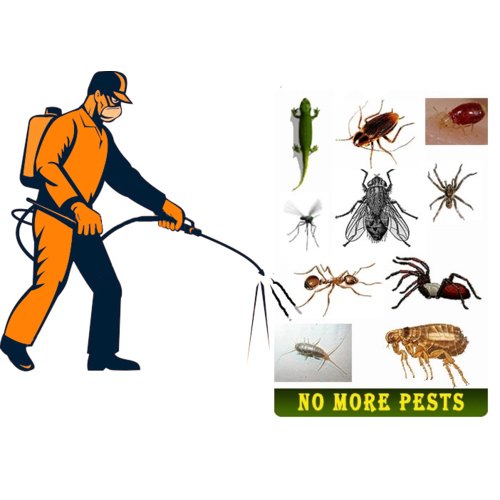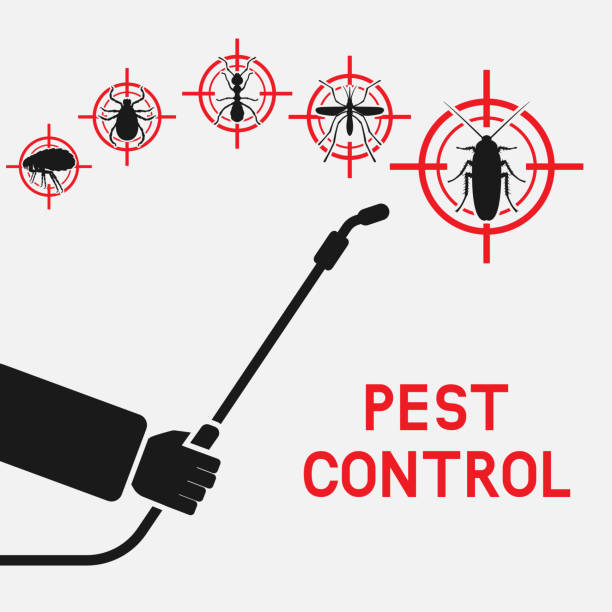Prevent Future Infestations with Services from Pest Control Lockhart
Prevent Future Infestations with Services from Pest Control Lockhart
Blog Article
Exploring Infestation and Treatment Strategies in the Globe of Bug Control
The landscape of parasite control includes a myriad of challenges, especially as infestations of common house bugs continue to evolve. By integrating preventative steps with sophisticated administration strategies, such as Integrated Parasite Monitoring (IPM), property owners can much better safeguard their environments.

Common Home Pests
When it pertains to managing our home, recognizing usual home bugs is essential. These bugs not just interrupt our comfort yet can likewise present health risks and damage residential or commercial property. One of the most common house pests include ants, cockroaches, rats, termites, and bed pests.
Ants, frequently seen foraging in kitchen areas, can contaminate food and develop large colonies. Cockroaches, known for their strength, can cause allergic reactions and spread virus. Rats, including mice and rats, can trigger structural damages and bring diseases like hantavirus and salmonella. Termites, typically referred to as "quiet destroyers," can compromise the honesty of wooden frameworks, causing pricey repair work. Bed pests, although not condition service providers, can trigger considerable pain with their attacks and bring about mental distress.
Identifying the signs of these parasites, such as droppings, nests, or bite marks, is important for very early treatment (Pest Control Lockhart). Proper hygiene practices, sealing entry points, and maintaining a clutter-free environment work preventative procedures. By identifying these usual home insects and recognizing their habits, house owners can take positive actions to mitigate invasions, making sure a much healthier living setting
Recognizing Parasite Infestations
Pest invasions can escalate promptly, transforming a small aggravation right into a substantial trouble if not addressed without delay. Common variables contributing to invasions consist of inadequate cleanliness, structural susceptabilities, and seasonal changes that drive bugs inside.
Recognizing the kind of insect is necessary, as various species display different behaviors and reproductive prices. For example, rats may establish nests in hidden locations while bugs like roaches grow in wet environments. Early discovery frequently hinges on identifying indications such as droppings, nibble marks, or uncommon audios, which can suggest an issue before it ends up being serious.
Environmental conditions also play an important function in pest spreading. Cozy, moist environments can help with the fast growth of insect populations, while changes in landscaping or building can inadvertently create favorable settings. Therefore, routine evaluations and preventative actions are paramount to minimizing the danger of infestations. An enlightened strategy to understanding these characteristics prepares for reliable insect administration techniques in the future.
Treatment Methods and Strategies
Effective treatment approaches and methods are vital for mitigating insect invasions and restoring a safe environment. A complex technique is usually best, integrating chemical, organic, and mechanical techniques customized to the specific insect and the severity of the invasion.
Chemical treatments consist of using pesticides and herbicides, which can efficiently remove insects. Nevertheless, proper application and adherence to safety standards are important to reduce risks to humans and non-target organisms. Integrated Insect Management (IPM) urges click for info the judicious use chemicals as a last hope, relying instead on monitoring and limit levels to establish treatment requirements.
Biological control approaches include introducing all-natural predators or bloodsuckers to minimize pest populaces. This method is increasingly preferred, especially in agricultural settings, as it promotes environmental sustainability.
Mechanical approaches, such as catches and obstacles, offer prompt remedy for bugs without presenting chemicals. Choices consist of sticky traps for pests or physical barriers for rats.
Ultimately, the selection of treatment approach must consider the specific insect, the setting, and potential influence on human wellness and ecosystems. A well balanced mix of these techniques can efficiently take care of problems while promoting long-term pest control services.
Safety Nets for Homes
Proactively addressing bug concerns before they escalate is crucial for preserving a healthy and balanced home atmosphere (Pest Control Lockhart). Implementing effective preventive steps can significantly minimize the likelihood of infestations, ultimately protecting both your property and health

Correct landscape design likewise plays an essential function in prevention. Keeping shrubs and trees cut away from the residence minimizes linked here the opportunities of parasites finding their method inside. Make certain that drain systems are working successfully to prevent standing water, which can draw in insects and other pests.
Lastly, regular evaluations are a good idea. Frequently looking for indicators of parasite task permits early treatment. By taking on these safety nets, homeowners can produce a setting that is much less hospitable to pests, consequently boosting their general top quality of life and decreasing the demand for extensive insect control treatments.
Commercial Bug Control Methods
A comprehensive strategy to business insect control is crucial for organizations intending to keep a secure and hygienic environment. Efficient strategies involve a mix of normal examinations, employee training, and the application of Integrated Pest Monitoring (IPM) practices.
Normal examinations allow early discovery of insect task, enabling for timely intervention. Businesses should create a regular timetable for these assessments, focusing on high-risk locations such as kitchen areas, storage space areas, and garbage disposal sites. Staff member training is equally crucial; team should be educated on the indications of parasite infestations and the importance of reporting them promptly.
Implementing IPM practices helps minimize bug issues sustainably. This consists of environment adjustment, such as securing entrance points and reducing mess, as well as using all-natural deterrents prior to considering chemical therapies.

Furthermore, teaming up with a qualified parasite control service provider guarantees access to expert use this link knowledge and advanced treatment alternatives. This collaboration can bring about tailored parasite control intends customized to the certain requirements of the service, lessening dangers and improving overall efficacy. Inevitably, an aggressive and educated method fosters a pest-free environment, guarding both public wellness and service track record.
Final Thought
In conclusion, efficient pest control necessitates an extensive understanding of usual home parasites and their behaviors, coupled with targeted treatment techniques. Implementing precautionary actions together with therapy methods such as Integrated Parasite Management and biological control boosts the ability to reduce infestations.
Report this page